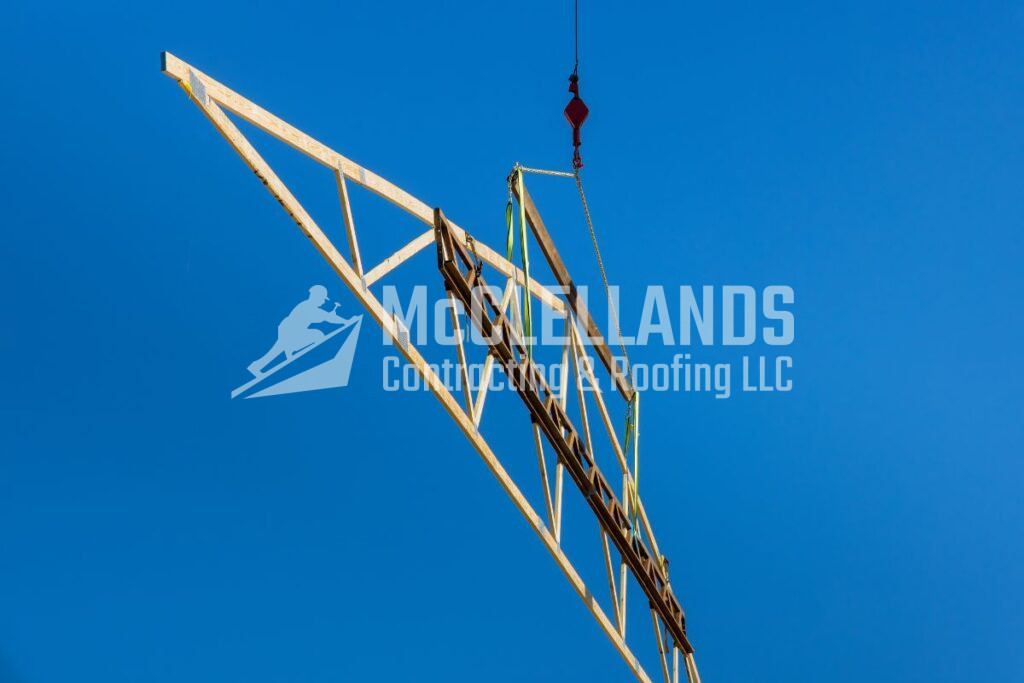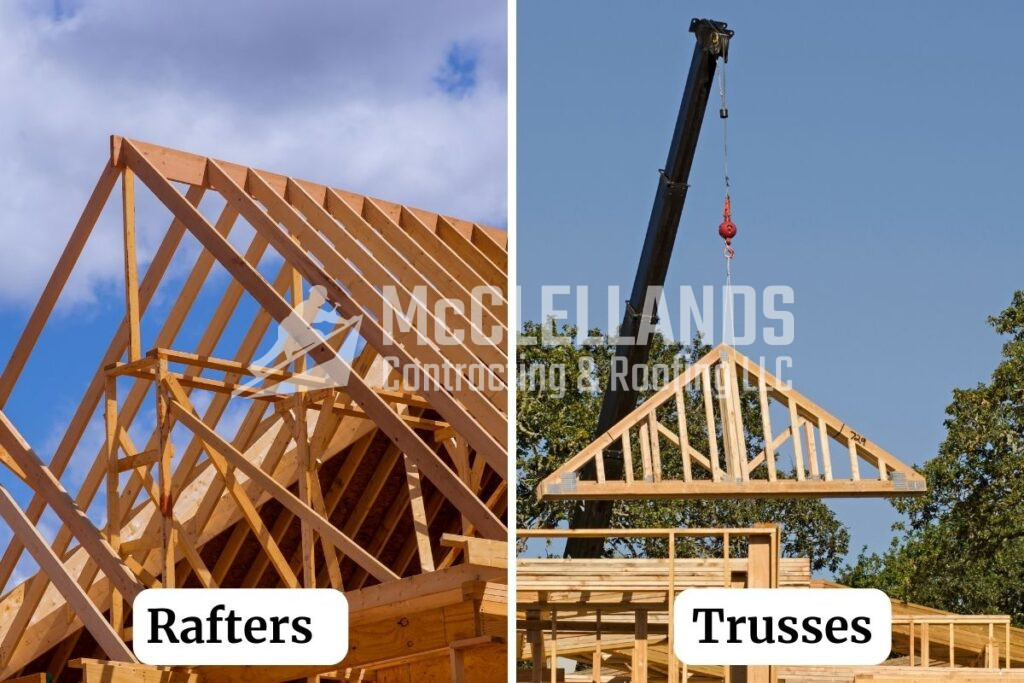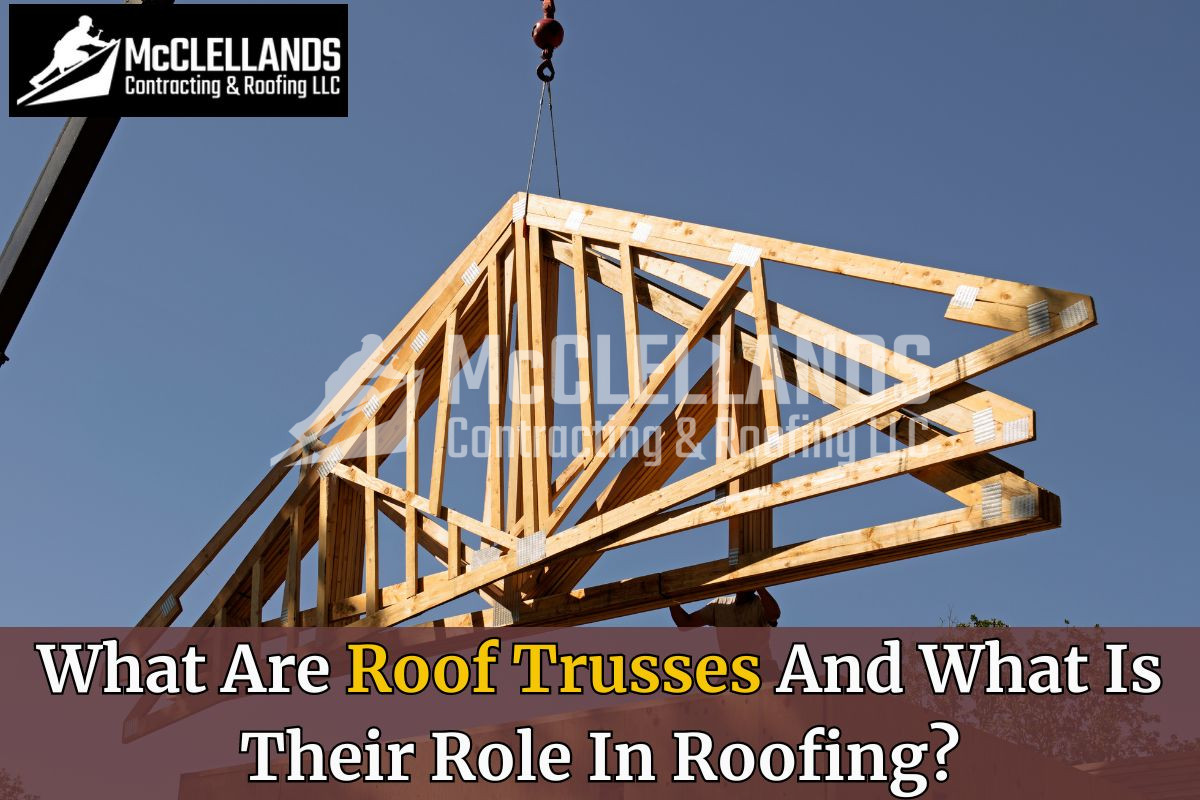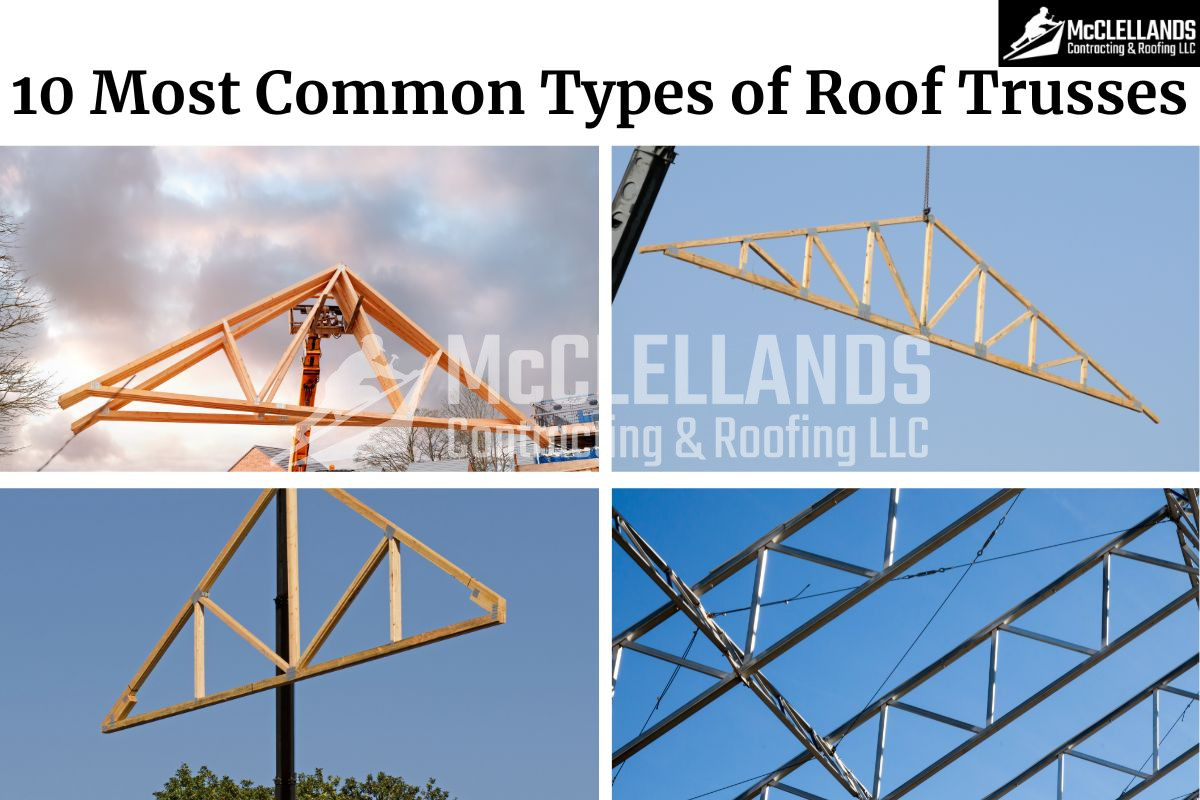While you might only see the upper layer, a complete roofing system has many elements. One significant component of a roof are the trusses.
With years of experience in roofing and remodeling services, McClellands Contracting and Roofing provides homeowners with crucial insights on home improvement projects. In this blog post, we’ve compiled a complete guide on roof trusses and their role within the roofing system. But that's not all!
We've also compared roof trusses to roof rafters so you can understand the differences between the two.
What Is a Roof Truss?
A roof truss is a triangular frame constructed at an off-site location and installed on a house to create the frame of the roof. It comprises a series of triangular units joined by wood beams at joints called panel points.
The triangular configuration gives the roof truss design inherent strength and rigidity. This structure allows them to cover large distances while supporting the weight of the roofing materials and any snow, wind, or other environmental loads.
Roof trusses can be used for many roof designs, such as gable, hip, flat, and gambrel. It can also work with different building styles.
The Role of Roof Trusses in Roofing
Now that we know a little bit about roof trusses, let’s examine their vital role in a roof’s structure.

Structural Support
The design of roof trusses is vital to support a building’s roof structure. Their triangular shape efficiently distributes the load, minimizing the risk of structural failure. This design allows them to withstand environmental forces such as wind, snow, and seismic loads, providing a durable and stable roof system that safeguards the building’s occupants and products.
Long-Span Capabilities
Roof trusses can span long distances without intermediate supports, making them ideal for wide-open spaces and large buildings. This capability allows for expansive interior layouts and architectural freedom.
Prefabricated roof trusses typically have a lower upfront cost than traditional framing methods, and the reduced construction time, labor costs, and maintenance requirements can result in significant savings over the building's lifespan.
Energy Efficiency
Specialized roof truss designs excel in structural stability and energy efficiency. These trusses provide extra space within the roof structure for thicker insulation without sacrificing strength. This enhanced insulation minimizes heat transfer, reducing reliance on heating and cooling systems.
Beyond energy savings, the design aligns with modern construction's focus on green practices, contributing to reduced carbon footprints and resource conservation. Ultimately, the long-term financial benefits of decreased energy expenses make trusses a wise investment for building owners.
Rafters vs. Trusses

In the past, roofs were framed with individual rafters – sloped wood beams that extended from the ridge to the outer walls. While simple in concept, constructing a roof using individual rafters requires more labor and materials than trusses.
On the other hand, prefabricated roof trusses are engineered for optimal strength off-site, requiring less labor and time during installation. As a result, truss roofs can often have longer spans between supports than rafter framing.
Benefits of Roof Trusses
There are certain benefits of roof trusses over roof rafters:
Manufactured in a Controlled Environment
They are produced off-site in a controlled setting, ensuring they are always double-checked and are of the most outstanding quality. They are also custom-designed to meet your exact specifications.
Automated manufacturing methods ensure that the trusses are produced on schedule and transported to the job site as needed. The precision and accuracy of this manufacturing also ensure that the trusses are of the highest quality, with no errors or defects.
Cost-Effectiveness
Roof trusses are lightweight and easy to install, reducing construction time and labor costs. Wood is the most common and cost-effective material, costing between $1.50 and $4.50 per square foot.
Roof truss installation requires specialized equipment, but prefabricated trusses can help reduce costs. They offer design flexibility, structural soundness, and improved schedule management. In general, roof trusses are a cost-effective, efficient, and versatile option for roof construction.
Design Flexibility
Roof trusses are versatile, customizable structures suitable for various buildings. Trusses can accommodate multiple roof pitches, spans, and configurations, making them ideal for residential, commercial, and industrial projects. They can be designed for unique roof shapes, meeting specific project requirements like local wind and snow loads, and can be easily adjusted if changes are needed.
Trusses offer complete customization with materials like wood or metal and can span up to 100 feet, providing strong support for large structures. Roof trusses are popular with architects and homeowners who want to create unique and innovative roof designs. Their flexibility allows for creative and personalized designs.
Efficient Construction
Prefabricated roof trusses epitomize efficient construction methods, offering advantages beyond time and cost savings. Manufactured off-site to precise specifications, they ensure consistency and quality while reducing construction errors.
This approach streamlines on-site assembly, accelerating project completion and minimizing holding costs. Additionally, prefabrication minimizes material waste, contributing to environmental sustainability.
Ease of Installation
Roof trusses are often made from wooden beams for ease of handling and installation. Though, proper preparation, alignment, and storage are crucial for a successful installation. Following the manufacturer's instructions is essential when installing trusses, including nailing only where indicated and keeping the components aligned.
Resistance to Environmental Factors
Roof trusses are designed to withstand various environmental factors, including wind, snow, and debris buildup, ensuring the roof remains structurally sound in extreme weather conditions. They are crafted to withstand heavy loads, such as the weight of snow and rain, and can be modified to withstand winds up to 150 mph.
The flexibility of a truss allows it to bend slightly without damaging the roof above it, making it more durable than traditional stick-built rafters. Roof trusses are often a prerequisite in areas with severe weather, ensuring that the roof can withstand the extreme weather conditions and remain intact.
The Roofing Experts You Can Trust
At McClellands Contracting and Roofing, we offer extensive roof installation services for new construction and re-roofing projects. Our team of qualified installers ensures your new roof trusses are installed perfectly for a sturdy, long-lasting roof over your head.
Our expertise lies in delivering tailored, durable, and budget-friendly home renovation solutions across Pittsburgh and the surrounding areas. Additionally, our committed team excels in handling minor renovation projects like roof repairs and gutter services. Feel free to contact us at (412) 353-5660 to talk with our home remodeling specialists about your project.


